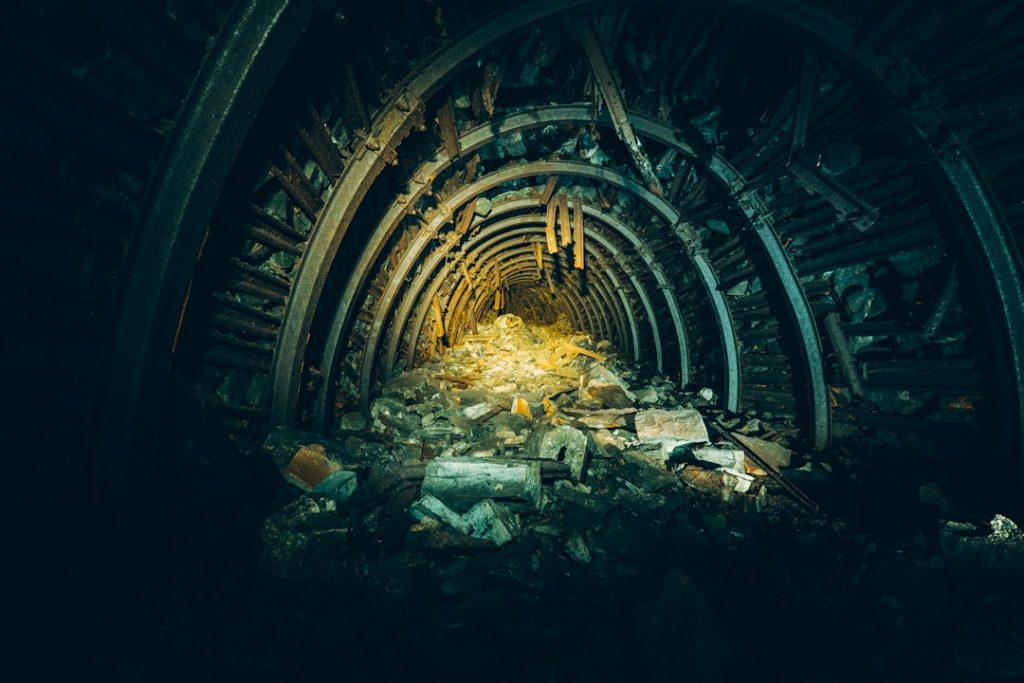Kabul, the capital city of Afghanistan, is facing a significant energy crisis. The current energy situation in Kabul is dire, with frequent power outages and a lack of access to reliable electricity for many residents. The city’s energy infrastructure is outdated and unable to meet the growing demand for power. As a result, businesses, hospitals, and households are all affected by the unreliable energy supply, leading to economic and social challenges.
The energy supply in Kabul is primarily dependent on imported fossil fuels, making it vulnerable to price fluctuations and supply disruptions. This reliance on imported energy sources also puts a strain on the country’s economy, as it leads to high energy costs and drains valuable foreign exchange reserves. Additionally, the use of fossil fuels for energy production contributes to air pollution and environmental degradation, further exacerbating the city’s challenges. Overall, the current energy situation in Kabul is unsustainable and in need of urgent attention and transformation.
Key Takeaways
- Kabul currently faces frequent power outages and relies heavily on imported fossil fuels for energy generation
- Kabul has great potential for renewable energy sources such as solar and wind due to its abundant sunlight and wind resources
- Embracing renewable energy in Kabul can lead to reduced air pollution, energy independence, and job creation
- Challenges to implementing renewable energy in Kabul include high initial costs, lack of infrastructure, and limited technical expertise
- Successful renewable energy projects in Kabul include the installation of solar panels on government buildings and the development of wind farms in the region
- The government plays a crucial role in setting policies and providing incentives, while the private sector can invest in and develop renewable energy projects in Kabul
- The future of renewable energy in Kabul looks promising with increasing awareness, technological advancements, and international support
The Potential of Renewable Energy in Kabul
Despite the current energy challenges, Kabul has significant potential for renewable energy development. The city is blessed with abundant sunlight, making solar energy a viable and sustainable option for meeting its energy needs. In addition to solar energy, Kabul also has the potential for wind and hydroelectric power generation, given its geographical location and natural resources.
Renewable energy sources have the potential to provide a reliable and sustainable energy supply for Kabul while reducing its dependence on imported fossil fuels. By harnessing the power of renewable energy, Kabul can improve its energy security, reduce its carbon footprint, and create new economic opportunities. Furthermore, investing in renewable energy can help diversify the city’s energy mix and contribute to its long-term energy sustainability. With the right policies and investments, Kabul can unlock the full potential of renewable energy and transform its energy landscape for the better.
The Benefits of Embracing Renewable Energy in Kabul
Embracing renewable energy in Kabul offers a wide range of benefits for the city and its residents. One of the primary benefits is the potential for improved energy security and reliability. By diversifying its energy sources and reducing its reliance on imported fossil fuels, Kabul can create a more resilient energy infrastructure that is less vulnerable to external disruptions.
Furthermore, embracing renewable energy can lead to significant environmental benefits. Solar, wind, and hydroelectric power generation produce minimal greenhouse gas emissions compared to traditional fossil fuel-based energy sources. By transitioning to renewable energy, Kabul can reduce its carbon footprint and contribute to global efforts to combat climate change.
In addition to environmental benefits, embracing renewable energy can also create new economic opportunities for Kabul. The development of renewable energy projects can stimulate job creation, attract investment, and spur innovation in the city’s energy sector. Moreover, by investing in renewable energy infrastructure, Kabul can reduce its long-term energy costs and improve the affordability of electricity for its residents and businesses.
Challenges and Obstacles to Implementing Renewable Energy in Kabul
| Challenges and Obstacles to Implementing Renewable Energy in Kabul |
|---|
| Lack of infrastructure for renewable energy |
| High initial investment costs |
| Political instability and security concerns |
| Limited technical expertise and skilled labor |
| Reliance on traditional energy sources |
| Regulatory and policy barriers |
While the potential for renewable energy in Kabul is significant, there are several challenges and obstacles that must be addressed to successfully implement renewable energy projects in the city. One of the primary challenges is the lack of adequate infrastructure and technical expertise for renewable energy development. Kabul will need to invest in building the necessary infrastructure and capacity to support the deployment of renewable energy technologies.
Another challenge is the upfront cost of renewable energy projects. While renewable energy offers long-term cost savings, the initial investment required for infrastructure and technology can be a barrier to implementation. Access to financing and investment incentives will be crucial to overcoming this challenge and attracting private sector participation in renewable energy projects.
Additionally, policy and regulatory barriers can hinder the adoption of renewable energy in Kabul. Clear and supportive policies are needed to create an enabling environment for renewable energy development, including incentives for investment, streamlined permitting processes, and grid integration frameworks. Overcoming these challenges will require a coordinated effort from government, private sector, and international partners to create a conducive environment for renewable energy implementation in Kabul.
Successful Renewable Energy Projects in Kabul
Despite the challenges, there have been successful renewable energy projects in Kabul that demonstrate the city’s potential for sustainable energy development. One notable example is the installation of solar panels on public buildings and facilities, such as schools and hospitals. These solar installations have helped reduce electricity costs for these institutions while providing a reliable source of clean energy.
Another successful project is the development of small-scale hydroelectric power plants in rural areas surrounding Kabul. These projects have brought electricity to remote communities that were previously off the grid, improving living standards and economic opportunities for residents. These successful projects serve as examples of how renewable energy can address energy access challenges and create positive impacts for communities in Kabul.
Furthermore, there have been initiatives to promote rooftop solar installations in residential and commercial buildings in Kabul. These initiatives have helped reduce reliance on the grid and provide a decentralized source of clean energy for individual consumers. These successful projects demonstrate the potential for renewable energy to transform Kabul’s energy landscape and improve the quality of life for its residents.
The Role of Government and Private Sector in Promoting Renewable Energy in Kabul

The promotion of renewable energy in Kabul requires a collaborative effort between the government and the private sector. The government plays a crucial role in creating an enabling policy environment that supports renewable energy development. This includes establishing clear targets for renewable energy deployment, implementing supportive regulations, providing incentives for investment, and streamlining permitting processes for renewable energy projects.
Furthermore, the government can facilitate public-private partnerships to attract private sector investment in renewable energy projects. By providing financial incentives, risk guarantees, and technical support, the government can encourage private sector participation in renewable energy development in Kabul. Additionally, the government can invest in capacity building and technical training to enhance local expertise in renewable energy technologies.
On the other hand, the private sector has a vital role to play in driving innovation and investment in renewable energy projects in Kabul. Private companies can bring expertise, technology, and capital to develop and operate renewable energy infrastructure in the city. By partnering with local stakeholders and communities, the private sector can ensure that renewable energy projects are tailored to meet the specific needs of Kabul while creating economic opportunities for local businesses and residents.
The Future of Renewable Energy in Kabul
The future of renewable energy in Kabul holds great promise for transforming the city’s energy landscape and improving the quality of life for its residents. With the right policies, investments, and partnerships, Kabul has the potential to become a leader in sustainable energy development in the region. The adoption of renewable energy can help address the city’s current energy challenges while creating new economic opportunities and contributing to global efforts to combat climate change.
Looking ahead, it will be essential for Kabul to continue investing in renewable energy infrastructure and technology while building local capacity and expertise in sustainable energy development. This will require sustained commitment from both the government and the private sector to overcome challenges and obstacles to implementing renewable energy projects. By working together, Kabul can unlock its full potential for renewable energy and create a more sustainable and resilient future for its residents.
In conclusion, embracing renewable energy offers a pathway for Kabul to address its current energy challenges while creating new opportunities for economic growth and environmental sustainability. With the right policies, investments, and partnerships, Kabul can harness its abundant natural resources to build a more resilient and sustainable energy infrastructure that benefits all its residents. The future of renewable energy in Kabul is bright, and with concerted efforts from all stakeholders, the city can pave the way for a cleaner, more prosperous future powered by renewable energy.
If you’re interested in learning more about the potential for renewable energy in Kabul, you should check out this article about the top Afghan coal plant leading the way in processing. This article discusses the advancements in processing coal to improve fuel efficiency and reduce environmental impact, which could be a crucial step in transitioning towards renewable energy sources in Kabul.
FAQs
What is renewable energy?
Renewable energy is energy that is collected from renewable resources, which are naturally replenished on a human timescale, such as sunlight, wind, rain, tides, waves, and geothermal heat.
What are the benefits of renewable energy?
Renewable energy sources produce little to no greenhouse gas emissions, reduce dependence on fossil fuels, and contribute to energy security and independence. They also create jobs and stimulate economic growth.
What are some examples of renewable energy sources?
Some examples of renewable energy sources include solar power, wind power, hydroelectric power, biomass, and geothermal energy.
How is renewable energy used in Kabul?
In Kabul, renewable energy is used for electricity generation, heating, and cooling. Solar panels and wind turbines are commonly used to harness renewable energy in the city.
What are the challenges of implementing renewable energy in Kabul?
Challenges to implementing renewable energy in Kabul include high initial costs, lack of infrastructure, and technical and regulatory barriers. Additionally, intermittent nature of some renewable energy sources can pose challenges for energy storage and distribution.



